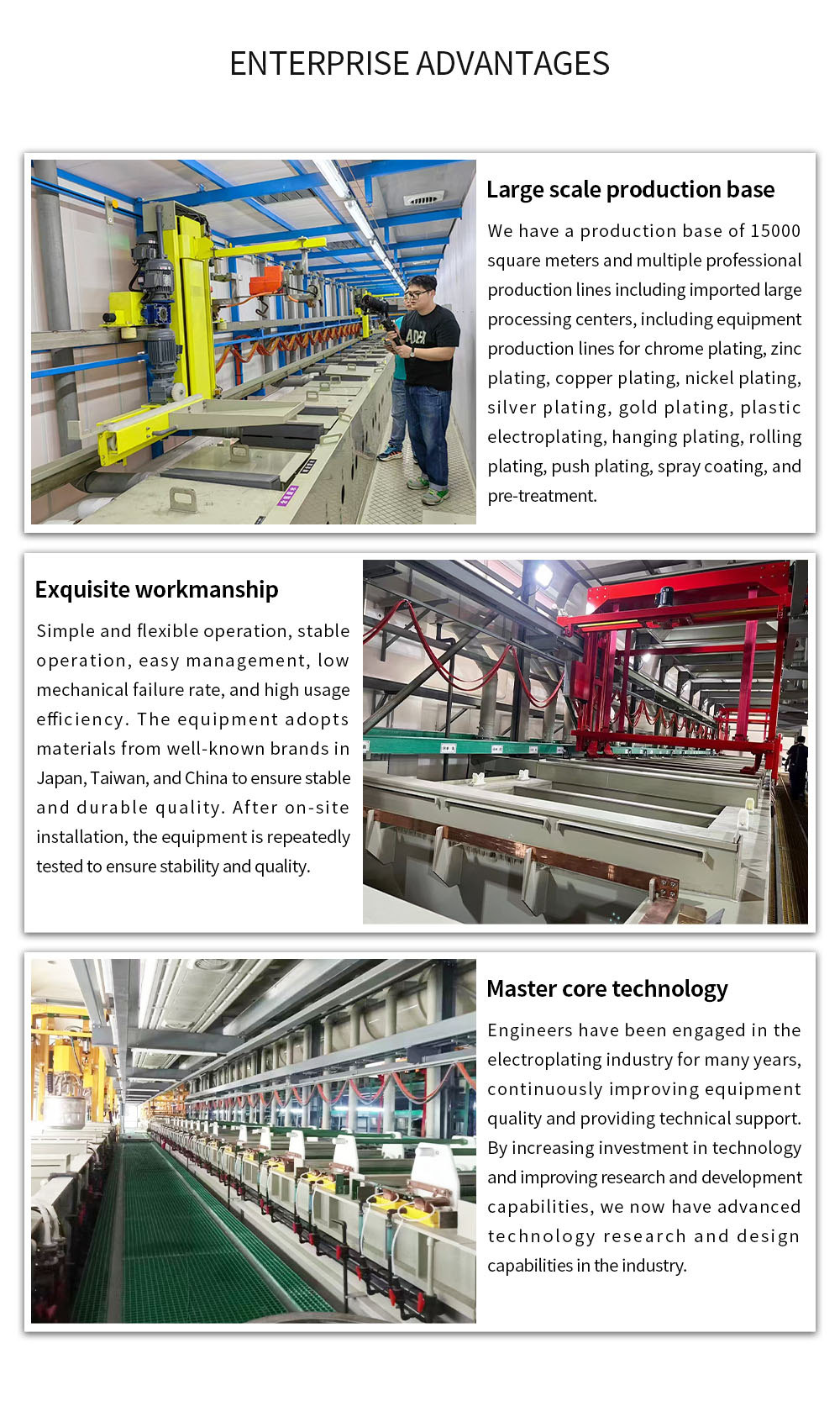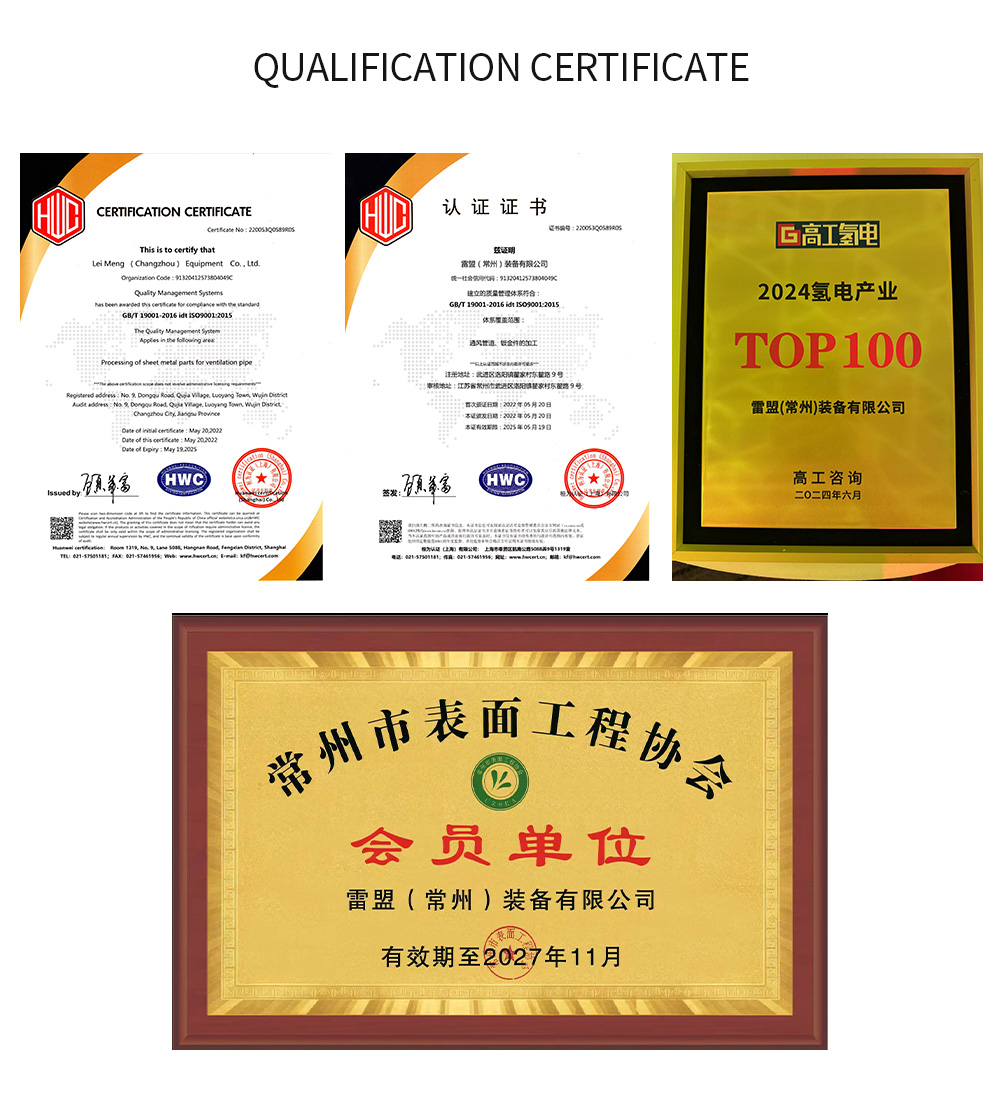Copper Electrolysis Equipment,Copper Electrolysis Equipment manufacturer
Company:
Raymond (Changzhou) Equipment Co., Ltd. | Plating Automation Solution Provider
Keywords:
Copper Electrolysis Equipment,Copper Electrolysis Equipment manufacturer
Raymond (Changzhou) Equipment Co., Ltd. | Plating Automation Solution Provider
Copper Electrolysis Equipment,Copper Electrolysis Equipment manufacturer
High Purity Copper Refining · Efficient Production · Sustainable Solutions
The Raymond Copper Electrolysis Equipment is a state-of-the-art solution designed for the efficient and high-purity refining of copper. This advanced system utilizes the principles of electrorefining to produce copper cathodes with purity levels typically exceeding 99.99%, making it indispensable for industries that demand the highest quality copper, such as electronics, electrical engineering, and advanced materials manufacturing. Copper electrolysis is a critical step in the production of electrolytic copper, which serves as a fundamental raw material for a vast array of high-tech applications.
At Raymond, we leverage extensive expertise and incorporate global best practices from leading manufacturers in Europe, USA, Japan, and Korea to deliver cutting-edge copper electrolysis solutions. Our equipment is engineered for optimal performance, reliability, and energy efficiency, integrating precise control over electrolyte composition, current density, and temperature. We focus on providing systems that not only achieve superior copper purity but also minimize operational costs, enhance environmental sustainability through efficient material recovery, and ensure compliance with stringent industry standards. Partner with Raymond for a robust and efficient copper electrolysis solution that elevates your production capabilities and strengthens your position in the global market.
The Raymond Copper Electrolysis Equipment employs a well-established electrorefining process to purify crude copper (anode copper) into high-purity electrolytic copper (cathode copper).
Crude copper, typically cast into anode plates, is prepared and suspended in the electrolytic cells. These anodes contain copper along with various impurities.
The electrolytic cells are filled with an acidic copper sulfate electrolyte solution. The crude copper anodes are connected to the positive terminal of a DC power supply, while thin starter sheets of pure copper (or stainless steel blanks) act as cathodes and are connected to the negative terminal.
When current is applied, copper from the anode dissolves into the electrolyte as copper ions (Cu2+). Simultaneously, pure copper ions from the electrolyte are deposited onto the cathode, forming high-purity copper cathodes. Impurities either fall to the bottom as anode sludge (e.g., precious metals, lead) or remain dissolved in the electrolyte (e.g., nickel, iron).
The electrolyte is continuously circulated and purified to maintain its optimal composition and remove accumulated impurities. This ensures consistent plating quality and prevents contamination of the cathode copper.
Once the desired thickness is achieved, the high-purity copper cathodes are harvested from the cells. The remaining anode residue (anode sludge) is collected for further processing to recover valuable by-products.
Raymond Copper Electrolysis Equipment is engineered for superior performance, reliability, and adaptability, incorporating advanced features inspired by global industry leaders.
| Technical Parameter | Specification Range |
|---|---|
| Equipment Type | Fully Automatic Copper Electrorefining System |
| Copper Purity (Cathode) | ≥ 99.99% (typically 99.995% to 99.999%) |
| Anode Material | Crude Copper (Blister Copper, Anode Copper) |
| Anode Composition | Customizable based on raw material (e.g., 99.0-99.5% Cu) |
| Production Capacity | 500 kg/day to 100 tons/day (customizable) |
| Electrolytic Cell Type | Polymer Concrete, FRP, or Lined Steel |
| Electrolyte Composition | Copper Sulfate (CuSO4), Sulfuric Acid (H2SO4) |
| Current Density | 200 - 350 A/m² (adjustable) |
| Voltage per Cell | 0.2 - 0.4 V |
| Temperature Control | Automatic Heating/Cooling System (45-65°C) |
| Control System | Advanced PLC Control (Siemens, Mitsubishi), HMI Touchscreen, SCADA Integration, Data Logging, Remote Monitoring |
| Rectifiers | High-efficiency Thyristor or IGBT Rectifiers |
| Anode Sludge Treatment | Integrated collection and processing for precious metal recovery |
| Environmental Systems | Fume extraction, acid mist suppression, wastewater treatment, electrolyte recycling |
| Safety Features | Emergency stop, interlocks, leak detection, fire suppression, advanced ventilation, operator safety training |
| Automation Level | Fully Automated Anode/Cathode Handling, Electrolyte Management, and Process Control |
The Raymond Copper Electrolysis Equipment is designed to effectively address critical challenges faced by copper producers and refiners.
Our Solution: Our precise control over the electrolytic process, combined with advanced cell design and electrolyte purification, consistently yields copper cathodes with purity levels exceeding 99.99%, meeting the stringent requirements for high-tech applications.
Our Solution: Our energy-efficient rectifiers and optimized cell configurations minimize power consumption, while automated systems reduce labor and chemical costs, leading to significant overall operational savings.
Our Solution: The electrolytic process effectively separates impurities, and our integrated anode sludge treatment systems ensure maximum recovery of valuable by-products like gold, silver, and platinum group metals, enhancing profitability.
Our Solution: Our equipment incorporates advanced environmental control systems, including fume extraction, acid mist suppression, and wastewater treatment, ensuring compliance with regulations and promoting sustainable production.
Our Solution: Fully automated anode/cathode handling and process control systems reduce reliance on manual labor, minimizing human error and significantly improving workplace safety.
Our Solution: Real-time monitoring and precise control of all critical parameters through advanced PLC/HMI systems ensure consistent product quality and stable, reliable operation, reducing downtime and rework.
Copper electrolysis equipment is specialized in copper electrolysis production, which is widely used in metallurgy, chemical industry and other fields. The following is a detailed introduction of copper electrolysis equipment:
I. Equipment Overview
Copper electrolysis equipment mainly includes key components such as electrolyzer, rectifier, electrolyte circulation system, cathode and anode. These equipment can realize copper extraction and purification by reducing copper ions in the copper-containing electrolyte to metallic copper and depositing it on the cathode by electrochemical principles.
II. Main Components and Functions
1. Electrolyzer: Electrolyzer is the core component of copper electrolysis equipment, which is used to hold the electrolyte and carry out the electrolysis reaction. Electrolyzer is usually made of acid and alkali resistant, corrosion resistant materials to ensure long-term stable operation.
2. Rectifier: The rectifier is responsible for converting alternating current (AC) into direct current (DC) to provide a stable current for the electrolysis process. Its performance directly affects electrolysis efficiency and product quality.
3. Electrolyte circulation system: The electrolyte circulation system is responsible for uniformly transporting the electrolyte into the electrolyzer and keeping the parameters such as concentration, temperature and flow rate of the electrolyte within a reasonable range. This helps to improve electrolysis efficiency and product quality.
4. Cathode and anode: The cathode is the deposition site for the reduction of copper ions to metallic copper and is usually made of inert materials such as stainless steel or titanium. The anode is used to provide copper ions and is usually made of solid copper-containing material (e.g. copper anode sludge).
III. Operating Principle
In the copper electrolysis process, the copper-containing electrolyte is introduced into the electrolyzer. When direct current is passed through the electrolyte, copper ions at the cathode receive electrons and are reduced to metallic copper, while copper at the anode is oxidized to copper ions in the electrolyte. Through continuous electrolytic reaction, metallic copper is gradually deposited on the cathode, forming copper plates or sheets.



Large scale production base
Lei Meng Equipment have a production base of 15000 square meters and multiple professional production lines including imported large processing centers,including equipment production lines for chrome plating, zinc plating, copper plating, nickel plating,silver plating, gold plating, plastic electroplating, hanging plating, rolling plating, push plating, spray coating, and pre-treatment.
Exquisite workmanship
Simple and flexible operation, stable operation,easy management,low mechanical failure rate, and high usage efficiency.The equipment adopts materials from well-known brands in Japan,Taiwan and China to ensure stable and durable quality.After on-site installation, the equipment is repeatedly tested to ensure stability and quality.
Master core technology
Engineers have been engaged in the electroplating industry for many years,continuously improving equipment quality and providing technical support.By increasing investment in technology and improving research and development capabilities, we now have advanced technology research and design capabilities in the industry
Lei Meng (Changzhou) Equipment Co. Ltd. is a large-scale equipment manufacturing enterprise.After more than ten years of rapid development, ithas two major production bases in Changzhou and Wuxi, as well as a technology research and development center with a total area of 15000 square meters. lt has multiple professional production lines, including imported large-scale machining centers.